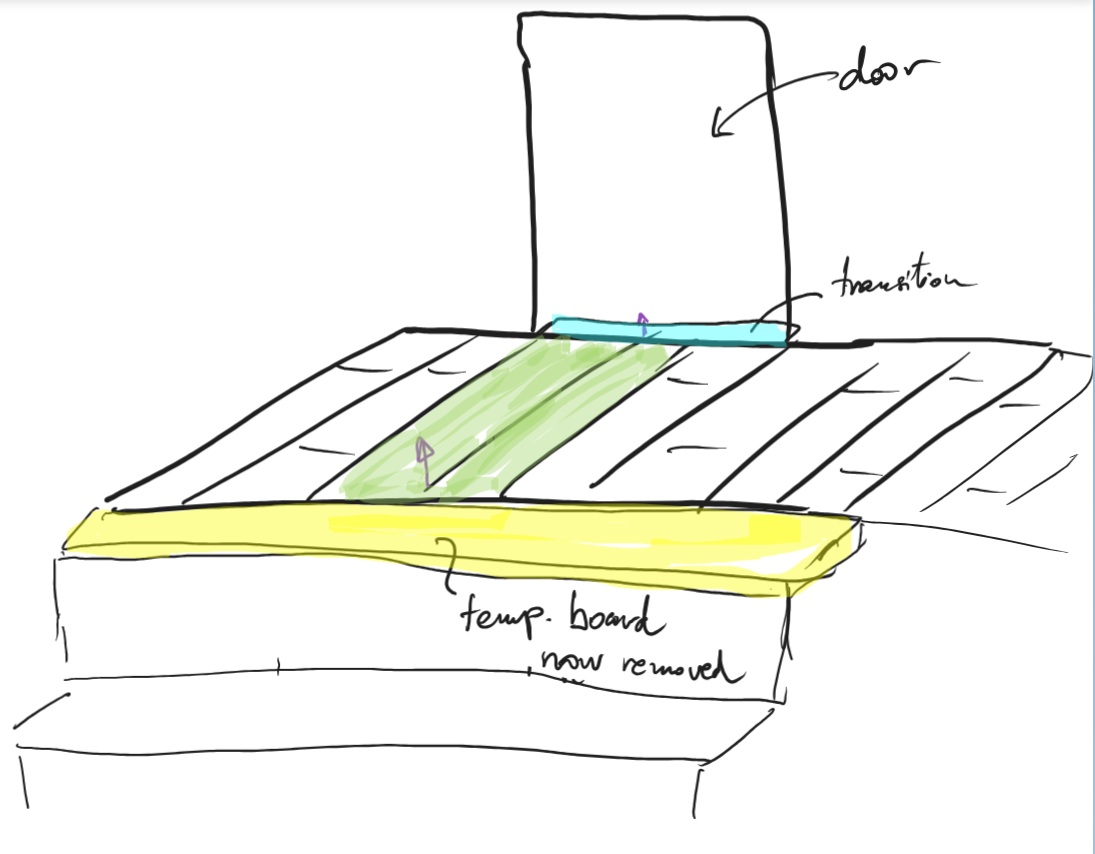Ivan Turbinca
Well-Known Member
I have an narrow area between the kitchen entrance and the stairs that is 39" wide with engineered hardwood installed an year ago
The boards are installed transversal to the area
There was a temporary board (yellow in the picture) nailed toward the stairs side that I had to remove to finish the stairs and to replace it with a matching nose
This temporary board was nailed so I had to pry it out but I did not realize that it had a tongue that it was connecting it to the permanent boards above mentioned
So while I removed that temporary board I accidentally unglued two of these boards (green in the picture)
Their end toward the stairs is more lose and I could inject glue from there and put some weights on the floor till the adhesive cures
Their end near the transition piece that connects the floor to the kitchen tiles is not flush with the floor anymore and I need the glue that I am injecting to reach all the way to that point, under the floor
The end of the green boards near the blue piece is probably 1/32" above the blue piece only in the spot marked with a purple arrow
What adhesive and what tools should I use for this. The plan is to pump it from the stairs end. Only those two boards are in one pieces 39" long and they are the only ones that traverse the entire area, the others are shorter as depicted

The boards are installed transversal to the area
There was a temporary board (yellow in the picture) nailed toward the stairs side that I had to remove to finish the stairs and to replace it with a matching nose
This temporary board was nailed so I had to pry it out but I did not realize that it had a tongue that it was connecting it to the permanent boards above mentioned
So while I removed that temporary board I accidentally unglued two of these boards (green in the picture)
Their end toward the stairs is more lose and I could inject glue from there and put some weights on the floor till the adhesive cures
Their end near the transition piece that connects the floor to the kitchen tiles is not flush with the floor anymore and I need the glue that I am injecting to reach all the way to that point, under the floor
The end of the green boards near the blue piece is probably 1/32" above the blue piece only in the spot marked with a purple arrow
What adhesive and what tools should I use for this. The plan is to pump it from the stairs end. Only those two boards are in one pieces 39" long and they are the only ones that traverse the entire area, the others are shorter as depicted





